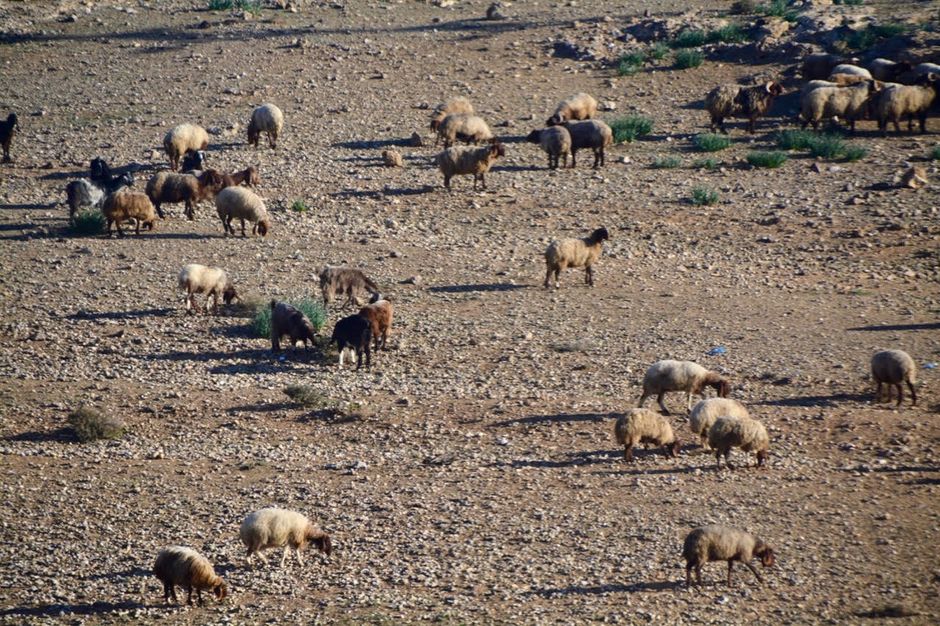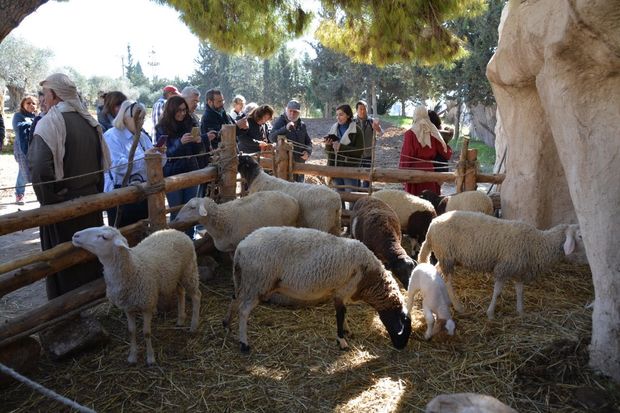The sheep of his hand
The Bible refers to the sheep as a docile and affectionate animal; which knows the voice of its shepherd; gentle and silent; unable to survive on their own, which is why they have to be guided by the shepherd.
25 APRIL 2021 · 11:00 CET

This is the passage of Scripture the eunuch was reading:
“He was led like a sheep to the slaughter, and as a lamb before its shearer is silent, so he did not open his mouth”. (Acts 8:32)
The sheep (Ovis orientalis) is a ruminating mammal which walks on the tips of its feet, thus transformed into (ungulate) hoofs, and was domesticated by humans since early antiquity and used as livestock.
The Old Testament refers to the heads of the families of Israel who served king David, and to their professions, among which it specifically mentions that of keeper of livestock and sheep-breeder (1 Chronicles 27:31). Although the Hebrew language tends to be sparse in the number of words it uses, it nevertheless deploys an extraordinary abundance of terms relating to the life of shepherds and their flocks. There are at least six words, with their corresponding plurals, to express the different stages of a sheep’s life. This would indicate to what extent the breeding and care of these animals were present at the dawn of human civilisation.

Photo: Antonio Cruz. The Hebrew word for a head of small livestock, which included sheep and goats, was she, a term which occurs frequently in the Bible, especially in relation to the sacrificial rituals and the classification of animals as pure or impure. The word used for the female sheep was rajel, and for the stud ram, also used in sacrifice, ávil; recently weaned lambs of one to three years, sacrificed during Passover, were kebes; while taleh or telí, were the young lambs still feeding on their mother’s milk. The ovine livestock breed native to the Holy Land, and the one to which the Bible generally refers, is the Bujaria sheep (Ovis orientalis laticaudata).
The Hebrew term tson or tseón stems from a root which means “to emigrate”, and is the origin of the word “flock”, both of sheep and goats. It was translated into Greek as melón and into Latin as pecus. Sheep had already been domesticated at the time of Jacob, as indicated in the story of the selection he made of Laban’s flock, between the speckled and unspeckled sheep (Gen. 30:37-42). The transhumance of sheep and goats was one of the main occupations of the Hebrew people, and a vitally important source of their livelihood.
The Hebrew patriarchs’ flocks of sheep and herds of cattle donkeys and camels were their main source of income (Gen. 12:16). Even the descendants, both in Egypt and later in Canaan, continued devoting themselves to livestock farming (Ex. 10:9; 12:32, 38; 1 Chronicles 27:31) until New Testament times (Luke 2:8). From the rocky mountains of Galilee to the desert of Judea, through the fields of Samaria, Israel boasted fertile meadows bedecked with grass throughout the year, but had many arid steppes where grass was scarce, though always sufficient. There was always enough pasture to feed the livestock throughout the year.
The Bible states that “the Rubenites and the Gadites, who had large herds and flocks, saw that the lands of Jazer and Gilead were suitable for livestock” (Num. 32:1; Judges 5:16; 1 Samuel 16:11). It also tells us that “A certain man in Maon, who had property there at Carmel, was very wealthy. He had a thousand goats and three thousand sheep, which he was shearing in Carmel” (1 Samuel 25:2). Likewise, we read of certain geographical enclaves with abundant flocks, like “the land of the eastern peoples”, near to Haran (Genesis 29:2); the country of Midian (Exodus 2:16); The land of Uz (Job 1:1-13); the land of the Hagrites (1 Chronicles 5:20-21); the flocks of Kedar and the rams of Nabaiot (Isaiah 60:7; Ezekiel 27:21).
The people of Israel did not only offer sheep and rams as sacrifices to the Lord, but they also ate their excellent meat, as they were considered ceremonially pure animals (1 Sam. 14:32; 25:18; 1 Kings. 4:23). Likewise, they drank their milk and made exquisite cheeses (Dt. 32:14; 1 S. 17:18; Job 10:10; Is. 7:21; 1 Co. 9:7). Their skins were used to make coarse outer clothing and to cover their tents (Ex. 26:14; He. 11:37; Zac. 13:4). Sheep’s wool was woven into highly valued fabrics (Lv. 13:47-48; Job 31:20; Pr. 27:26; Ez. 34:3). The horns of the rams were made into containers and horns (shofar) (Joshua 6:4,16). During the shearing season, or the wool cutting, popular festivals were held (Gn. 38:12; 1 S. 25:4, 11, 36; 2 S. 13:23).

Photo: Antonio Cruz. The Bible refers to the sheep as a docile and affectionate animal (1 S. 12:2); which knows the voice of its shepherd (John 10:3-4); gentle and silent (Isaiah 53:7); unable to survive on their own (Matt. 10:6), which is why they have to be guided by the shepherd (Numbers 27:17).
The New Testament often refers to Christians as “the lost sheep of the house of Israel” (Matt. 10:6), while the Gentiles are also referred to as “other sheep not of this flock” (John 10:16). However, in both cases, they are all under the mercy and protective care of Jesus Christ, the Good Shepherd (Mt. 26:31; Jn 10:1-27).
The psalmist wrote: “Come, let us bow down in worship, let us kneel before the Lord our Maker; for he is our God, and we are the people of his pasture, the flock under his care. Today, if only you would hear his voice, do not harden your hearts” (Psalm 95:6-8). Many years later the great theologian, Augustin of Hippo, commenting on these very words in the 4th century, reflected:
“We are the people of his pasture, and the sheep of his hand. See how elegantly he hath transposed the order of the words, and as it were not given its own attribute to each word; that we may understand these very same to be "the sheep", who are also "the people." He said not, the sheep of his pasture, and the people of his hand; which might be thought more congruous, since the sheep belong to the pasture; but he said, "the people of his pasture": the people themselves are sheep. But again, since we have sheep which we buy, not which we create; and he had said above, "Let us fall down before our Maker"; it is rightly said, "the sheep of his hand." No man maketh for himself sheep, he may buy them, they may be given, he may find them, he may collect them, lastly he may steal them; make them he cannot. But our Lord made us; therefore "the people of his pasture, and the sheep of his hand", are the very sheep which he hath deigned by his grace to create unto himself.” [1]
Notes
[1] Spurgeon, C. H. The Treasury of David
Published in: Evangelical Focus - Zoe - The sheep of his hand
